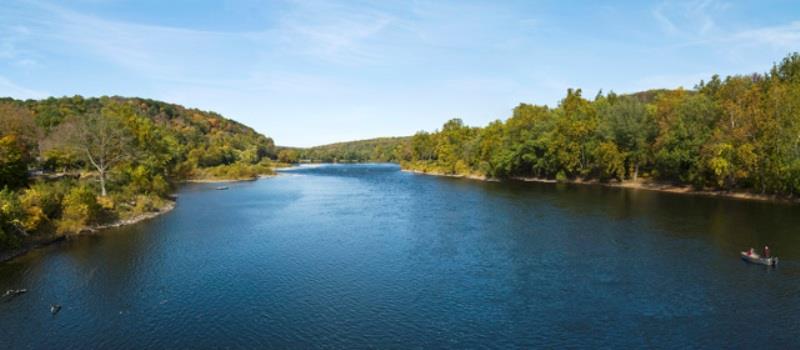
Where and how to catch blue catfish in rivers
by Take Me Fishing 21 Jul 2021 14:00 UTC

Catfish river © Take Me Fishing
Blue catfish are commonly found in rivers, large impoundments, and in the big water below those impoundments. In these locations, which are rich with forage, they can grow extremely large.
What blue catfish eat
The first step in determining how to catch blue catfish is to understand what they eat, and especially what is most abundant locally. This may vary by location; the upper parts of some rivers are strictly freshwater while the lower reaches are brackish leaning to higher salinity in the estuary.
Highly omnivorous, blue catfish eat various specious of fish as well as crabs, clams, crayfish, and snails. Assorted shad and herring species are a primary food in places where they exist. Blue crabs are also a popular item in brackish environments, in part because they are often abundant. Blue catfish bait includes live and dead natural baits (whole or chunked/cut), even rotten ones, as well as the smelliest stink bait concoctions, chicken parts, strong cheeses, and more.
Where blues are found
The area below a dam, with gouged holes and turbulent water, is often a prime place to find blue catfish, especially a deep hole just below a hump. The riprap along shorelines below a dam is also good, especially early in the season. Deep holes and pools throughout a river are prime blue catfish habitat.
How to catch blue catfish
Atop the list of blue catfish fishing tips would be this: fishing on the bottom is essential. Yes, this species is sometimes caught suspended in the water column, but that is far from the norm. Make sure your presentations are on the bottom.
Because blue catfish are bottom dwellers and bottom feeders, and are especially adapted to smelling forage, lures are much less effective than natural or processed bait. Also, still fishing or drifting with bait are most likely to produce fish.
In a river most anglers anchor upstream of the place to be fished and fish a bait directly downstream, using a heavy enough weight to stay on the bottom. This is often called bottom bouncing. Different sinker styles can be employed, some of which slide freely on the line. Usually there will be a 2-foot leader from the sinker (or swivel below the sinker) to the hook.
Keep slack out of the line
When a catfish takes the bait there's usually a momentary slackening of pressure on the rod tip. This is when you should lower the tip 12 to 18 inches, reel quickly, and set the hook.
Going catfishing soon? Make sure you have your fishing license.